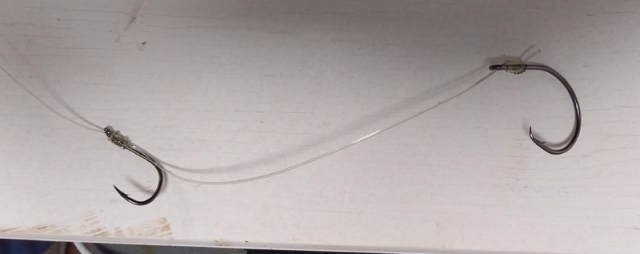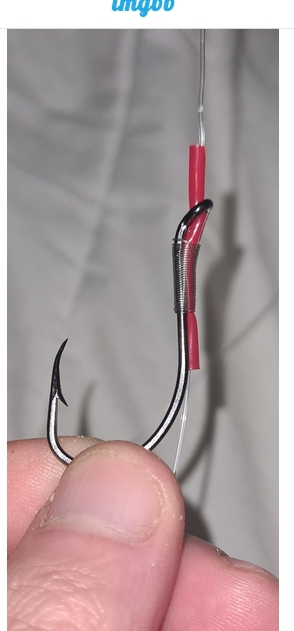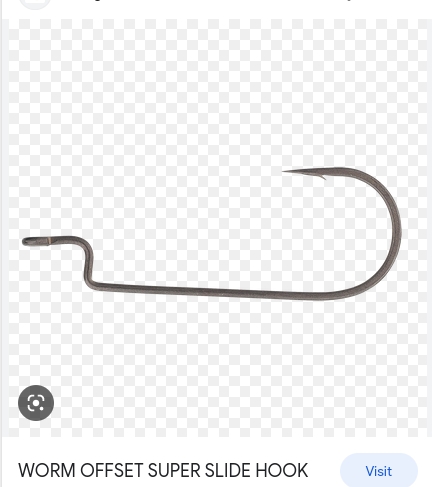Thanks all. Lots to go through. Wrote a big reply but just lost it when I clicked off the page to look at something.
Still testing the end circle hook connection. Not much between the top four so far of true snell, palomar, trilene, springer. But much more to consider about that connection than just strength. How does the hook roll and set, how easy to tie when wet and I'm bouncing around in the kayak like a fly in a bottle, can I use the same knot for both 50 and 200lb mono, how does the livie swim, etc.
No need to put the line through the eye of the top hook. Looked at a keeper hook nail knotted to the leader separately so it could slide up and down and while it would mean no extra stress on the leader because the leader itself isn't knotted there, on any given day my livebaits could range from a little 6" nibble to a big and strong 4lb feast, depending on what bait and predators I can find that day. Trying to find something I can slide to adjust the length but then still hold strong without sliding, during what might be many hours of slow trolling, is quite a conundrum.
Started testing an all-braid rig (right to the hook, no 'leader') this summer but couldn't find enough fish to keep testing. Have found hollow core braid abrasion resistant enough for me but need to work out if it puts off kingfish / amberjacks in a slow trolled livebait context. Lord knows they are going to see it easy enough but does it really matter as much as the marketeers at the leader companies what us to believe? Will keep testing it next summer if the fish ever turn up and weather ever settles (has been the worst first 1/3 of a year for fishing I can recall up here).
I'm going back to the shed for more testing. 
*edit*
The springer knot is coming up roses, true snell second, in both strength and, surprisingly to me, roll/set of the circle hook. These two are also the easiest to tie in both 50 and 200lb. Can't retie onto existing leader using the true snell though unless also retying the FG knot at the other end of the leader.
So, looks like Springer is my new favourite knot. Colour me surprised but thankful for the learning. I will however 'road-test' the true snell on a one-hook rig and see if it comes loose and if so, if a small silicon bead will help keep it there. It may be there's not much risk of it coming loose in the real world but I want to find out one way or the other.
Trilene wasn't as easy to tie, doesn't offer any strength benefit (at least the way I tied them) over the springer and I'm not comfortable with the way it cinches down - seems like too much risk of degrading the line. But thanks for the suggestion it'saboat. Someone else more coordinated than I might find it the best.
Palomar was surprisingly strong but i get the impression I'd struggle on the water to tie it without crossing the lines and weakening it. It also didn't roll and set a circle anywhere near as well as the springer or snell.
Onto that keeper hook now. Trying to find the holy grail of making it adjustable without slipping on a bigger livebait, and not weakening the leader much if at all. I did try the nail-knotted sliding keeper a while back but never used the tube so will try it to see if it grips better. Although it's not as easily hidden in the livies mouths with the tube on. But then it would stop some chafing of the leader.
Hmmm, on the matter of heat shrink chafe tube, I wonder if some of that over a true snell would eliminate any risk of it loosening off. Obviously not something I can do when retying on the water but worth a crack on land just to learn.
*edit 2*
If the leader is held tight so it's slightly thinner than normal, and the keeper hook is tied around it via it's own, independent snell or nail knot or the like, then when the tension is taken off the leader then that keeper is on pretty snug. Probably tight enough that small and medium sized livebaits won't be able to slide the keep hook down the leader, but it can still be positioned along the leader by hand but it takes some force.
Unless there's another way, I think it's worth trialling it next time out.
The world's a better place after a paddle.


